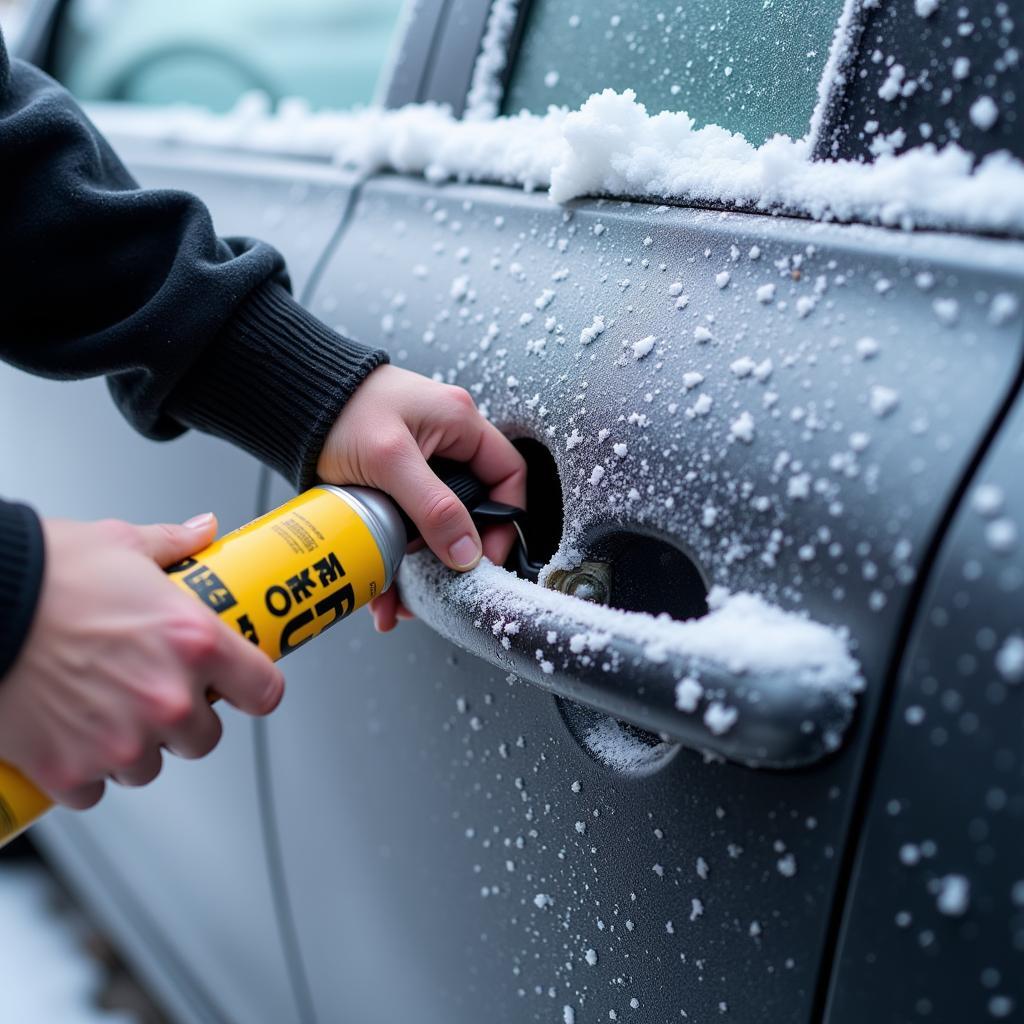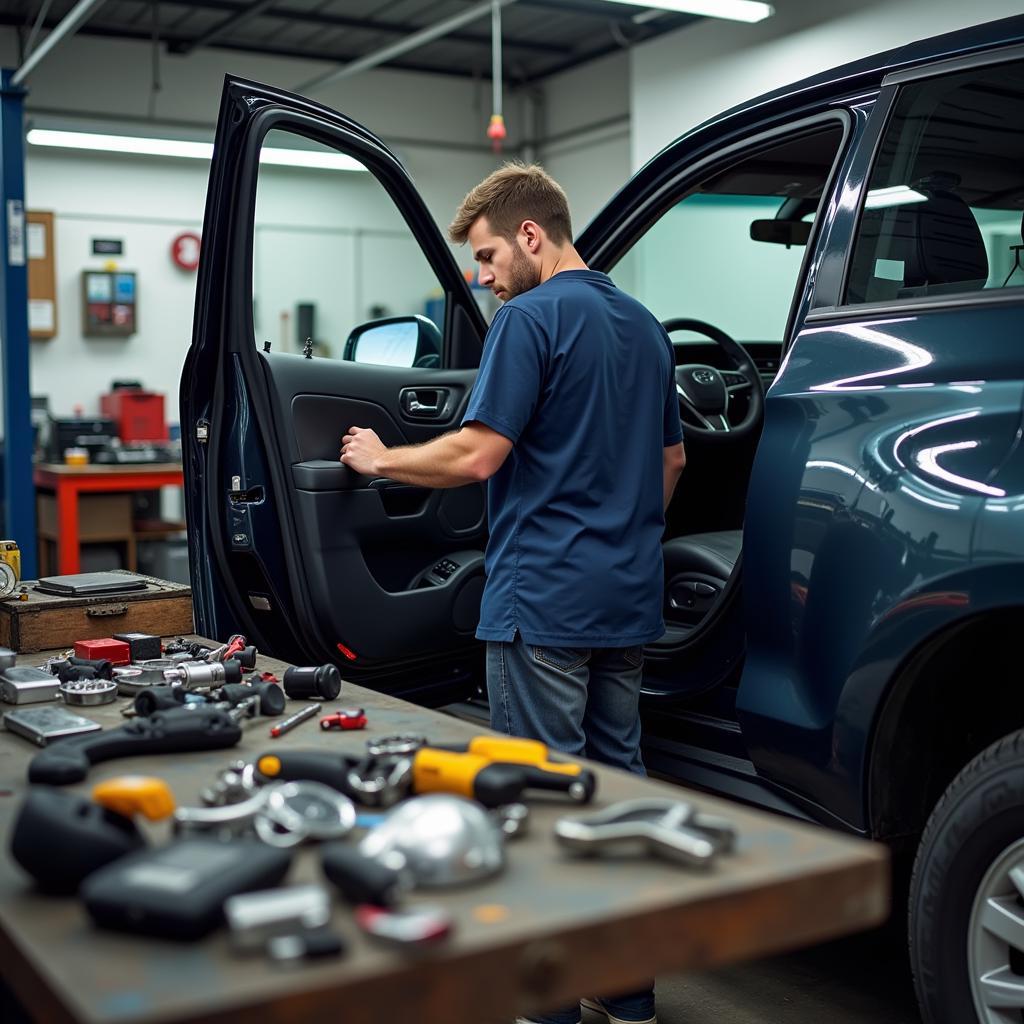Winter weather can be harsh on your car, and one of the most common problems is a frozen car door lock. This can be incredibly frustrating, especially when you’re already running late. But don’t panic! This guide will provide you with effective solutions to fix a frozen car door lock and prevent it from happening again.
Understanding Why Car Door Locks Freeze
Before we dive into the solutions, it’s helpful to understand why car door locks freeze in the first place. Here are the primary culprits:
- Moisture: When water seeps into the lock mechanism and then freezes, it expands and prevents the lock cylinder from turning.
- Lack of Lubrication: If the lock cylinder is dry, it’s more susceptible to freezing.
Quick Fixes for a Frozen Car Door Lock
Let’s start with some quick and easy methods to unfreeze your car door lock:
- Use a Straw and Your Breath: This might sound surprising, but your warm breath can be surprisingly effective. Simply find a straw (a wider one works best) and blow directly into the keyhole for a minute or two.
- Try a Lighter: If you have a lighter handy, carefully heat your car key for a few seconds. Important: Avoid overheating the key, as this can damage the internal components.
- Apply Rubbing Alcohol: Soak a cotton swab or paper towel with rubbing alcohol and apply it to the keyhole. The alcohol will help to melt the ice.
 Frozen car door lock de-icer
Frozen car door lock de-icer
Preventive Measures to Avoid Frozen Car Door Locks
Prevention is always better than cure! Here’s how to keep those car doors functioning smoothly throughout winter:
- Apply Lock Lubricant: Use a silicone-based lubricant or graphite spray specifically designed for car door locks. Apply it regularly, especially before a cold spell.
- Cover Your Car: A car cover provides excellent protection against the elements, including moisture and frost.
- Park Strategically: If possible, park your car in a garage or carport. If not, park facing the sun to allow its warmth to melt any ice.
 Applying lubricant to car door lock
Applying lubricant to car door lock
When to Seek Professional Help
If you’ve tried the above methods and your car door lock is still frozen solid, it’s best to contact a professional automotive locksmith. Attempting to force the lock or use inappropriate tools can cause further damage.
Additional Tips for Dealing with Frozen Car Doors
- Don’t Forget Other Entry Points: If you can’t access your driver’s side door, check if other doors or the trunk are accessible.
- Be Gentle: Avoid using excessive force on the key or door handle.
- Keep a De-Icer Handy: Consider keeping a dedicated de-icer product in your car or at home for quick access during winter.
 Car door lock repair shop
Car door lock repair shop
Conclusion
A frozen car door lock can be a major inconvenience, but by understanding the causes and implementing the tips and solutions outlined in this guide, you can effectively deal with this common winter woe and keep your car accessible all season long. Remember, prevention is key! By taking proactive steps, you can significantly reduce the chances of facing this frustrating situation in the future.
Need help with a stubborn car lock or other automotive issues? Contact AutoTipPro today at +1 (641) 206-8880 or visit our office located at 500 N St Mary’s St, San Antonio, TX 78205, United States. Our team of experienced technicians is here to help!
FAQs
Q: Can I use hot water to thaw a frozen car door lock?
A: It’s not recommended. While hot water might initially melt the ice, it can quickly refreeze and worsen the problem, potentially damaging your lock mechanism.
Q: What’s the best way to prevent car door locks from freezing?
A: Regularly applying a silicone-based lubricant or graphite spray to your car door locks is the most effective preventative measure.
Q: Can a frozen car door lock damage my car?
A: Forcing a frozen car door lock can damage the lock cylinder, key, or even the door handle. It’s always best to use patience and appropriate thawing methods.
Q: How often should I lubricate my car door locks in winter?
A: It’s a good idea to lubricate your car door locks at least once a month during winter, or more frequently if you live in an area with extreme cold and frequent precipitation.
Q: Is it safe to drive with a frozen car door lock?
A: While it might be technically possible to drive with a frozen car door lock (assuming you can access the vehicle), it’s not recommended. In case of an emergency, you need to be able to quickly and easily exit your vehicle.




Leave a Reply